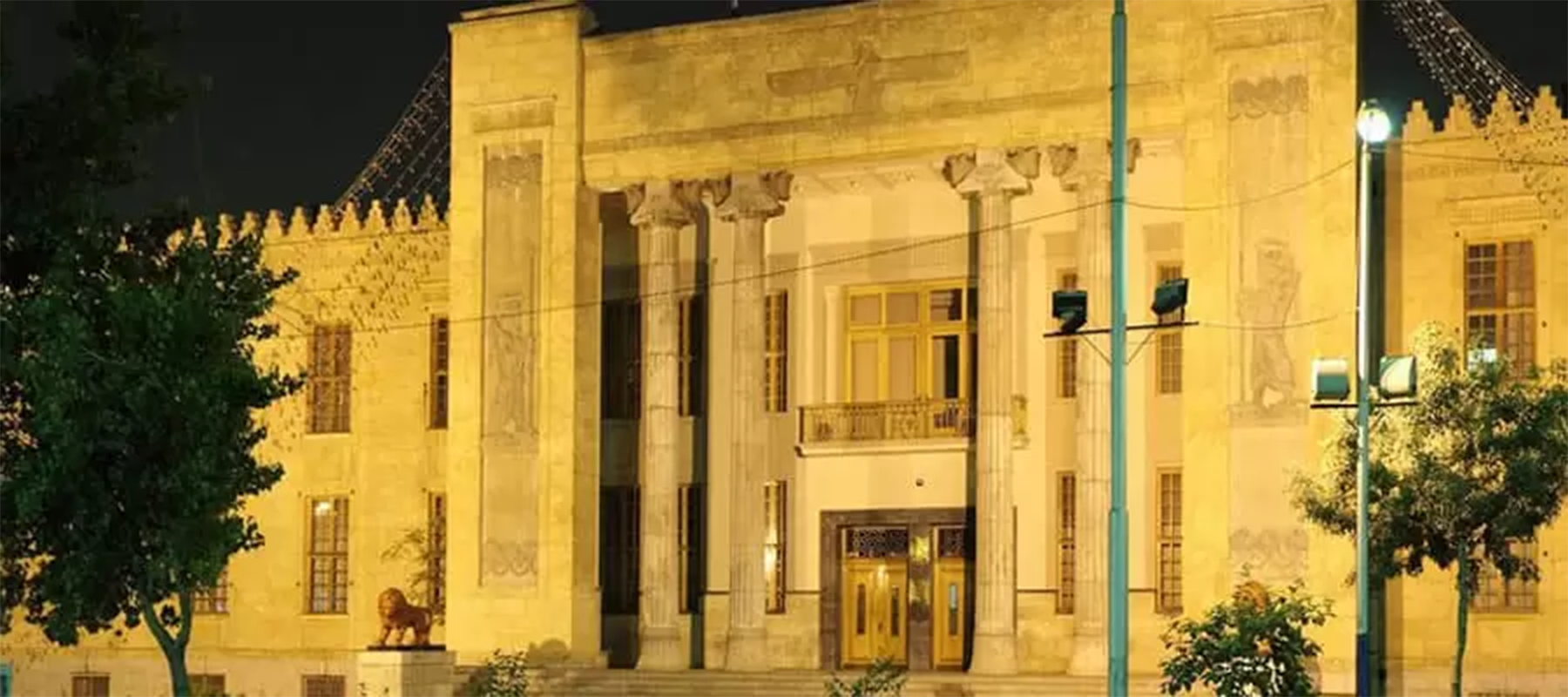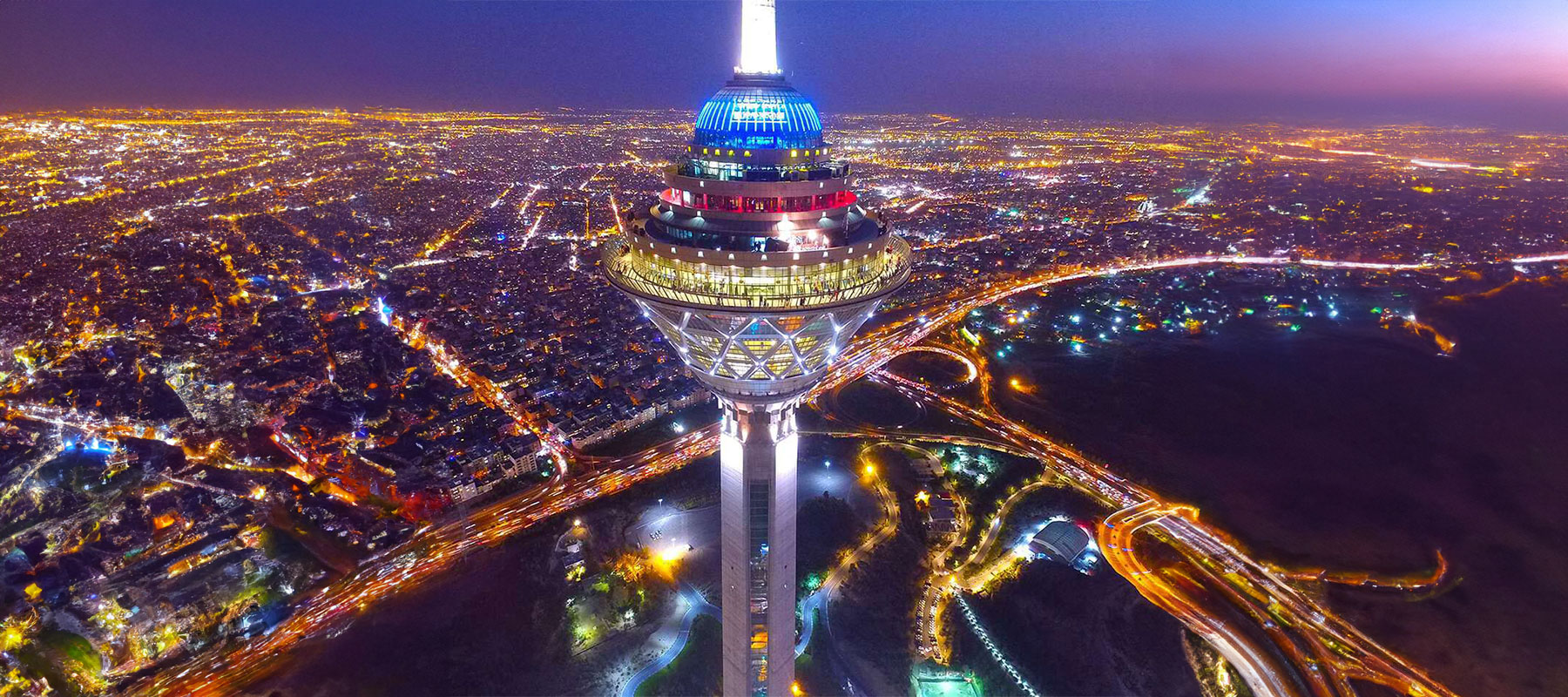
Amidst ongoing conversations about the potential depletion of national wealth and royal jewels, it's heartening to note that a significant portion of these invaluable historical treasures is carefully preserved within the National Jewelry Museum. Situated within the premises of the Central Bank building in Tehran, this museum showcases a remarkable collection of precious gems from bygone centuries, as well as royal gifts and possessions. Its public exhibition has the power to mesmerize any visitor to Tehran.

Discover the National Jewelry Museum: A Must-Visit Gem
Why is the National Jewelry Museum an absolute must-see? Here's why: it houses masterpieces adorned with the most precious gems like diamonds and pearls. Imagine being in the presence of the world's largest pink diamond, the Darya Noor diamond
If you have an affinity for one-of-a-kind jewellery and intricate gold designs, this museum is tailor-made for you. Prepare to be mesmerized by the treasures within the National Jewelry Treasury, a collection of unparalleled jewels that transcend both national and global value.
With all these incredible facets, it's no exaggeration to label the National Jewelry Museum as one of Iran's premier destinations. It's a place where history, artistry, and magnificence converge. Don't miss your chance to be part of this remarkable journey through time and beauty.

A Glimpse into the Museum's History
The story of the National Jewelry Museum is woven through the tapestry of history, surviving the ebb and flow of time. In 1316, a path was paved for these remarkable treasures, and they found their home within the treasury of the National Bank of Iran. As the years went by, and with the establishment of the current treasury in 1334, the responsibility of safeguarding these jewels fell into the hands of the Central Bank in 1339.
These jewels carry whispers of history, echoing through stories and legends of different eras. In each chapter, their fate took a different turn. The journey began with the Safavid kings, who gathered precious gems from lands as diverse as India, France, Britain, and the Ottoman Empire, creating a treasure that shone brightly.

Yet, history took an unexpected twist. Nader Shah, after the treasure was pillaged, ventured to India to reclaim what was lost. He not only retrieved these jewels but also returned with a bounty of spoils. A portion of this treasure found its way to the Holy Shrine of Imam Reza, as gifts for leaders, warriors, and soldiers.
The passage of time wasn't without its losses. The era of Ahmad Bey Afghan saw the irreversible disappearance of gems like the Koh Noor diamond, forever etching its legacy with Queen Victoria. The Qajar and Pahlavi periods, however, embraced these national treasures, crafting works that adorned them with unparalleled beauty.
Remarkably, even in recent years, the treasure continued to evolve. Two new gems, a turquoise from Neishabur mines and a pearl from the Persian Gulf, became part of this legacy, enriching the narrative of the National Jewelry Museum's history.
With tales of conquests, losses, and resilience, the museum stands as a living testament to Tehran's enduring history. As you step into this world, you're not just witnessing gems; you're tracing the footsteps of time itself.
Navigating Tehran Jewelry Museum: Insider Tips
Heading to the Tehran Jewelry Museum? Here's what you need to know for a smooth visit:
1. No Cameras or Phones: Once you're settled after reaching the museum, remember that cameras and mobile phones aren't allowed. Capture the beauty with your eyes and immerse yourself in the moment.
2. Age Limit: Keep in mind that entry is only for visitors aged 12 and above. Plan accordingly if you're travelling with younger companions.
3. Finding the Entrance: When you spot the central bank building near the Istanbul intersection, look for a discreet door at the top of the stairs. A friendly guard will guide you through the museum's wonders.
Embrace the elegance of history at the National Jewelry Museum. Leave distractions behind and journey into a world of treasures waiting to be discovered.
Exploring the Marvels of the National Jewelry Museum
The National Jewelry Museum is a gateway to not only economic value but also the rich tapestry of Iran's culture and history. A journey within these walls not only unveils treasures but also speaks to the artistic sensibilities of bygone eras.
Dive into this awe-inspiring collection where gems possess a value that defies calculation. Their magnetism transcends eras and boundaries, leaving us spellbound by their sheer elegance and importance. As you navigate through 37 rooms, you'll be greeted by a captivating array of artifacts, spanning from crowns and necklaces to ornaments and vases.Witness the elegance of history through tangible artistry – swords, daggers, shields, and a myriad of intricate objects tell stories of valour and craftsmanship. This isn't just a museum; it's a voyage into the past, an exploration of the artistic heritage that defines Iran.

Highlighting the Museum's Treasures
The National Jewelry Museum is a treasure trove of exceptional works, each telling a story of history, artistry, and opulence. Let's dive into some of its most captivating pieces.
Peacock Bed:
A true showstopper, the "Takht Tavus" bed immediately captures attention. Commissioned by Fath Ali Shah Qajar, this gilded wooden masterpiece showcases royal stones and intricate craftsmanship. The flat wooden frame reveals the skill of Qajar artists, with delicate floral motifs and elaborate carvings. Adorned with meticulously chosen gems, including diamonds, rubies, emeralds, and sapphires, the bed is a stunning play of colours against its golden backdrop. Symbolizing immortality and royalty, the peacock motifs reveal the grandeur of the Qajar dynasty, transporting visitors to a regal past.

Diamond of the Sea of Light:
The iconic pink "Darya Noor" diamond, weighing 182 carats, reigns as a jewel of unparalleled rarity. Its unique pink hue evokes the sea's ethereal glow, distinguishing it from other diamonds. With a history spanning centuries, this diamond has adorned royal armbands and crowns. Cut with precision, it boasts exceptional clarity, a true marvel of nature. As one of the largest pink diamonds globally, it's a testament to Iran's rich cultural heritage and the artistry of past craftsmen.

Crowns and Half Crowns:
The museum houses an exquisite collection of crowns and half-crowns from different eras. These royal headdresses epitomize splendour and authority, reflecting the artistic tastes of Iran's monarchs. Notable examples include the Taj Kiani, a dazzling masterpiece adorned with diamonds, emeralds, rubies, and pearls. Another standout is the Pahlavi crown, symbolizing the Pahlavi dynasty's cultural legacy. These headdresses reveal intricate flower and leaf motifs, showcasing the Qajar era's artistic sensibilities.

Jeweler's Globe:
A pinnacle of creativity, the Jeweler's Globe is a remarkable sight. Measuring 66 cm in diameter, this masterpiece is adorned with 34 gold pieces and 3656 grams of jewels. Each region on the globe is marked with different gemstones, representing geographical features and cultural influences. This globe is a testament to exploration, cultural diversity, global interconnectedness, and more. It embodies the creativity and skill of its creators, reminding us of the world's wonders and the timeless allure of precious stones.

The National Jewelry Museum is a testament to Iran's legacy, where art, history, and craftsmanship converge. As you explore its halls, you're not just witnessing treasures; you're immersing yourself in a world where every gem is a chapter of a grand tale and much more.
Optimal Time and Cost for Your Visit
Embarking on a journey to the National Jewelry Museum is a delightful endeavor that won't demand an extensive amount of time. While exploring the museum itself won't consume a significant duration, allocate a few extra minutes for passing through inspection gates and depositing your mobile phone and any metal items.
Plan for a visit that spans approximately 45 minutes to an hour to fully relish the displayed treasures. And here's a handy tip: if you possess a student card, you can enjoy the experience at half the standard entrance fee, enhancing accessibility.
For a comprehensive grasp of Tehran and the optimal ways to savor its attractions, we suggest delving into our Tehran travel guide. Armed with these insights, you'll be prepared to immerse yourself in the marvels of the National Jewelry Museum and the dynamic cityscape beyond.

Getting to the National Jewelry Museum
Getting to the National Jewelry Museum
Reaching the National Jewelry Museum is convenient, given its central location. However, considering the traffic regulations in the area, it's advisable not to use private cars. Instead, public transportation offers a smoother option.
For those using the metro, the Saadi station (red line 1) is the nearest stop, just 200 meters away from the museum. Additionally, a bus line connecting Enghelab Square to Baharestan Square passes through Istanbul Intersection Station, making it easy to access the museum via bus.
It's worth noting that this area also houses many other attractions of Tehran, creating a hub of exploration at your fingertips. So, embrace the convenience of public transportation and discover not just the National Jewelry Museum but also the treasures of the city around it.
What hotels are there to stay near National Jewelry Museum?
Hafez Hotel: 400 meters
Saadi Hotel: 500 meters
New Naderi Hotel: 600 meters
Iran Central Hotel: 700 meters
Prasto Hotel: 800 meters
What restaurants and eateries are close to the National Jewelry Museum?
Sandys Restaurant: 150 meters
Domino's fast food: 200 meters
Cafe Restaurant Naderi: 400 meters
Adel Restaurant: 750 meters
Gol Rezaie Restaurant Cafe: 750 meters
Discover the opulent wonders of Tehran's National Jewelry Museum, showcasing a stunning array of precious gems and artifacts that unveil the rich cultural heritage of Iran. Immerse yourself in a journey through history, art, and beauty. Let the allure of Tehran's National Jewelry Museum captivate you. Qaaph invites you to explore this dazzling treasure trove and experience the splendor of Iran's past.
Related Blog
03 Aug 2023 | Travel in Tehran
Chitgar Lake
Chitgar Lake: A serene artificial lake in Tehran, Iran. Offers boating, picnicki...
04 Aug 2023 | Travel in Tehran
Tabiat Bridge
Tabiat Bridge: An iconic three-level bridge in Tehran, Iran. Blending architectu...
04 Aug 2023 | Travel in Tehran
Milad Tower
Milad Tower: A striking landmark in Tehran, Iran. Among the world's tallest towe...



Comments
Total 0 comment in the post